 Of dingy bars and rides with strangers
Of dingy bars and rides with strangers
Chengannur, India --
The bar was cheap, dingy and smelly, but we were thrilled beyond words
to find it. After a day of reporting on one of the worst flood-hit
regions in India’s Kerala state, we desperately needed a place with an
electricity plug to recharge our equipment, a place to sit and a
half-decent Internet connection so that we could send the reporting that
we had gathered to our desks and on to the outside world.
Luck is paramount when you report on
natural disasters, as I’ve learned over the last few years while
covering floods, earthquakes, cyclones and other disasters for AFP
across South Asia. Extensive research and contacts can’t prepare you for
everything that you will encounter on the ground. You may know where to
go for possible stories, but how (and if) you will reach there almost
always depends on luck and persistence. As does getting out the
information you collected. Hence our elation at finding that dingy bar.
Flooded Kochi, Kerala, August 18, 2018.
(AFP / -)
The worst floods in a century in India’s
southern state -- a tourist haven otherwise known for its pristine
beaches, placid backwaters and luxury resorts -- left around 1.2 million
people homeless and killed over 400 people this August.

But here, inside this packed bar, you
could easily forget about an unfolding tragedy around us. The local
revellers were living up to the state’s reputation for having the
highest per-capita alcohol consumption in India. Me and my colleague,
photojournalist Manjunath Kiran, spent the next four hours ordering
things we’d never eat -- just to hold on to a corner table.
 Volunteering members of the Kerala Adventure Sports Club carry flood relief in the south of Kerala, August 17, 2018.
(AFP / Manjunath Kiran)
Volunteering members of the Kerala Adventure Sports Club carry flood relief in the south of Kerala, August 17, 2018.
(AFP / Manjunath Kiran)
At one point, maybe around the two-hour
mark, one of the men behind the bar objected that my laptop, plugged to
one of the power points was consuming too much electricity. Some drunk
men from an adjoining table joined in while I was still busy sending
stories of survival and mounting death toll.
It was both crazy and hilarious. I really
couldn’t understand what they were saying, mostly because they were
either too drunk to form a proper sentence or spoke the local Malayalam
language. At one point, it was just me in one dark corner looking at
animated locals pointing to my laptop charging cable and speaking in
Malayalam.
Hindi is probably the language most
synonymous with India. But there are dozens, if not hundreds, of
different languages and dialects that thrive across the country. So it
is entirely possible that even a Hindi, English and Punjabi language
speaker like me can be almost entirely lost in a corner of India, like I
was that night.
The commotion barely ended when another
man -- his breathe reeking of cheap local toddy -- suddenly came out of
nowhere and put his arm around my shoulder. He started mumbling
something in Malayalam when I impulsively shouted “Kya” (What in Hindi).
He realised I wasn’t a local and left after mumbling some more.
Once we had sent our stories and photos,
we couldn’t wait to get out of there, hopefully never to return again.
By now it was already around seven in the evening on our fourth day in
the flooded state of 33 million people. Ahead of us lay the difficult
task of finding a place to crash for the night, and of planning our
route to another flooded region the next day.
Four days earlier I had
hopped on two different flights from New Delhi to reach the city of
Kozhikode in northern Kerala. Most flights in the region had now been
diverted to this small airport after floods shut down the state’s main
international hub in Kochi.
The plan was to somehow travel from the
northern, relatively less affected, part of the state towards the
epicentre in central and eastern Kerala. But even in the relatively
‘unaffected’ north, the situation was perilous. The Kozhikode airport
was like a small, dry island -- no taxis were willing to travel too far
from it, and said that most connecting highways were still flooded or
badly damaged.
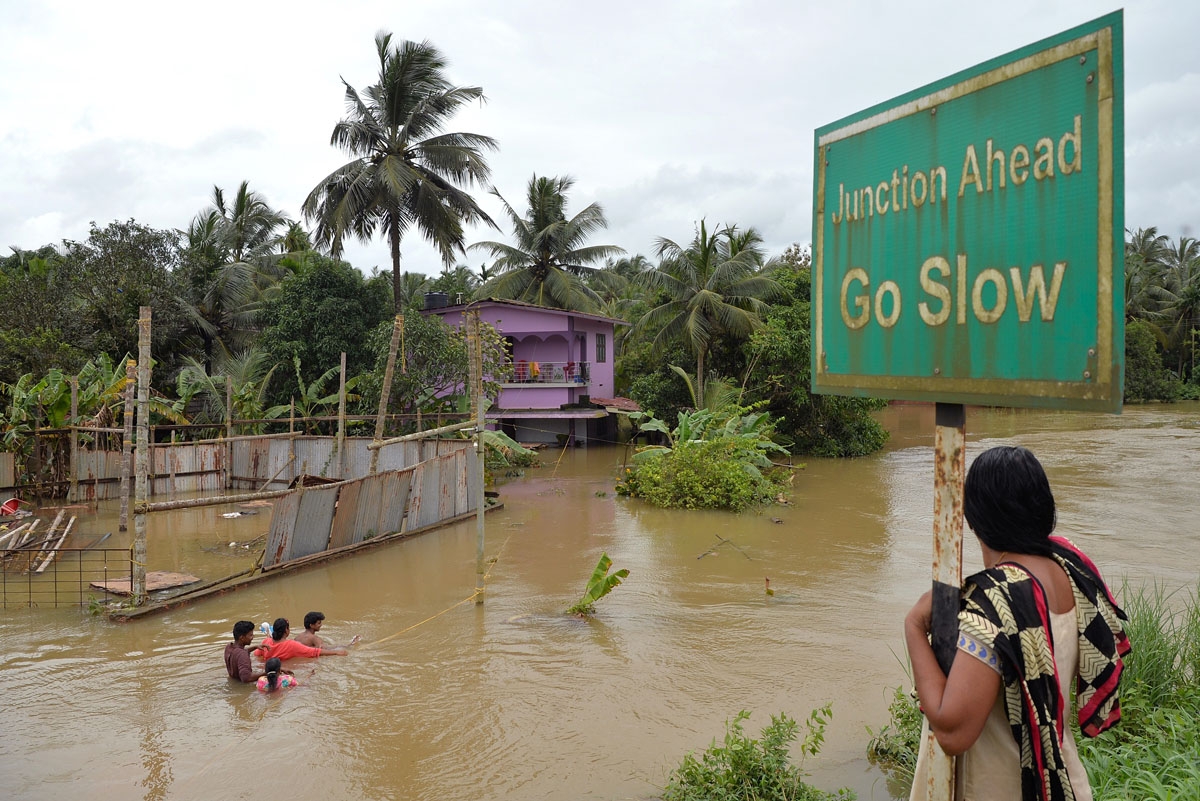 Outskirts of the Kozhikode district, Kerala, August 17, 2018.
(AFP / Manjunath Kiran)
Outskirts of the Kozhikode district, Kerala, August 17, 2018.
(AFP / Manjunath Kiran)
This is where luck came in. Manjunath had
been introduced by chance to Vijosh K. Jose, a local offroading
enthusiast. Jose, who had moved his family to relative safety, was
working with an entire network of young men -- all of them owners of
Indian SUVs like him -- who were now ferrying people and supplies
through damaged and flooded roads in the region.
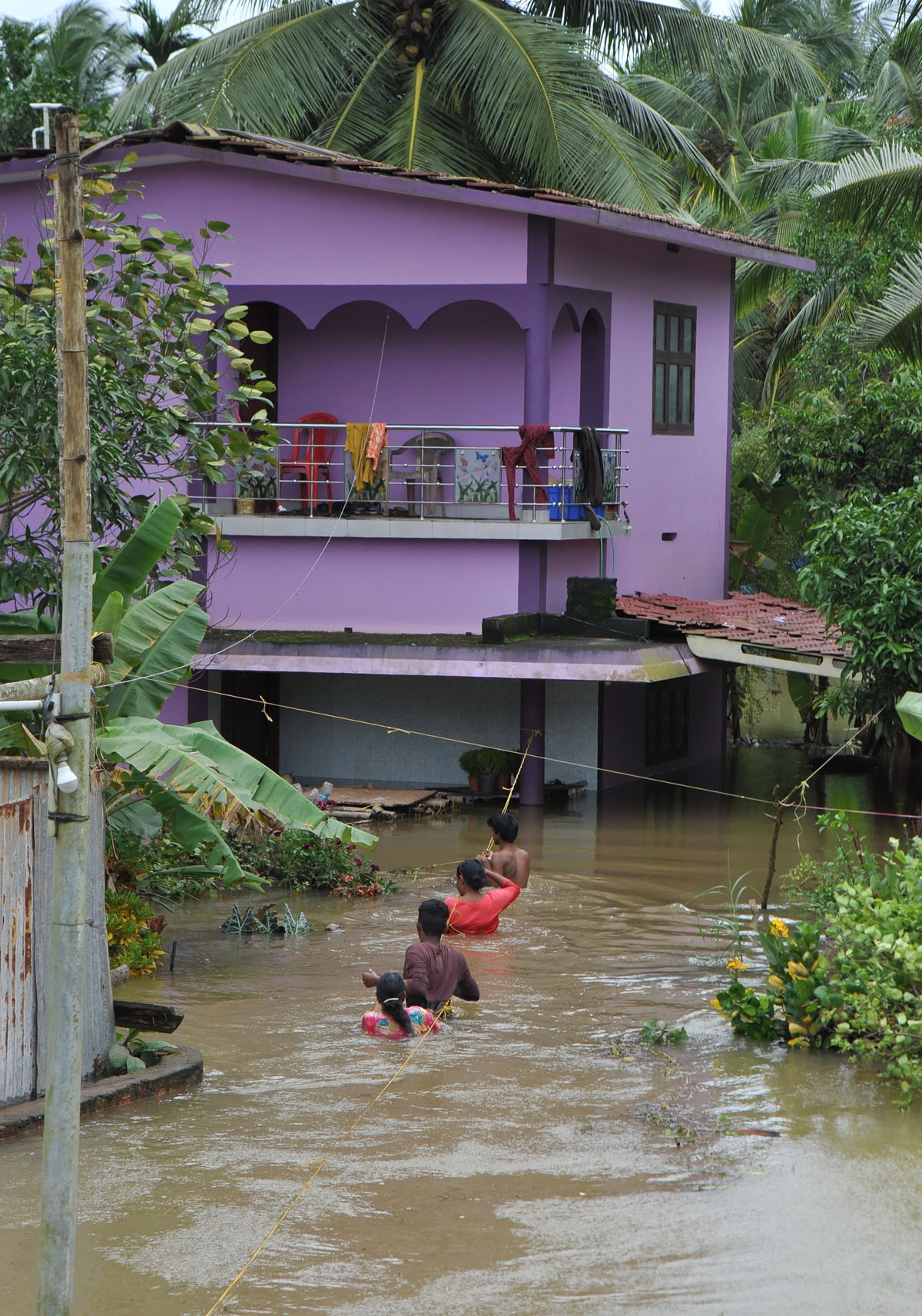 Outskirts of the Kozhikode district, Kerala, August 17, 2018.
(AFP / Manjunath Kiran)
Outskirts of the Kozhikode district, Kerala, August 17, 2018.
(AFP / Manjunath Kiran)
Their vehicles and driving skills, a hobby
or a luxury in normal times, was now in high demand with over 10,000
kilometers of state’s roads damaged in the floods. He made a few phone
calls and told us of two young men with an SUV who had agreed to let us
ride with them.
Almost three hours later we met Hareesh
Manamthodi and Bibin Kalathil on a dry patch of a flood-damaged highway.
These two strangers were our companions for the next five days as we
did almost 18-hour work days, driving on damaged or water logged roads
from one flood-hit region to the other.
 Indian navy and rescue personnel evacuate local residents in a boat at Aluva, Kerala, August 16, 2018.
(AFP / -)
Indian navy and rescue personnel evacuate local residents in a boat at Aluva, Kerala, August 16, 2018.
(AFP / -)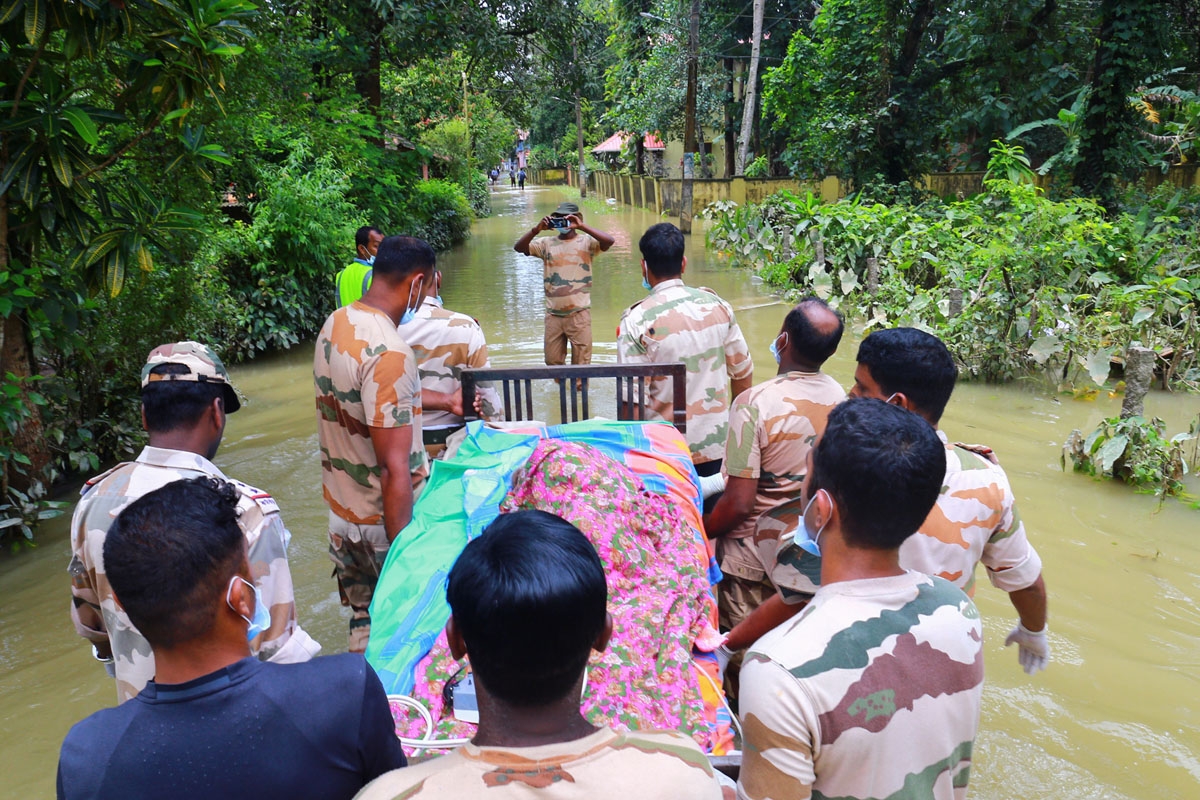 Indian rescue workers transport a bed with an elderly sick woman, Chenagannur, Kerala, August 20, 2018.
(AFP)
Indian rescue workers transport a bed with an elderly sick woman, Chenagannur, Kerala, August 20, 2018.
(AFP)
Usually Hareesh and Bibin would drop
us off close to a relief camp, in a flooded neighbourhood, or next to a
rescue officials’ camp, and then head out for a couple of hours,
looking for any locals in need of help. A friend of theirs, Shibu Naza, a
budding talent in the local movie industry, joined us in this unplanned
adventure after we reached his flooded city on the third day.
Crossing certain flooded sections of the
highways at night was particularly anxious. With power still out in
parts of the state, it was pitch dark on both sides of the highway.
There was just water and nothing was visible, except for a few feet
ahead illuminated by the SUV’s headlights.
Sometimes we took wrong turns and drove
for kilometers before seeing locals wading through two-three feet of
water who would tell us where we were. Hareesh and Bibin gave rides to
dozens of absolute strangers over the course of those days.
 Outskirts of the Kozhikode district, Kerala, August 17, 2018.
(AFP / Manjunath Kiran)
Outskirts of the Kozhikode district, Kerala, August 17, 2018.
(AFP / Manjunath Kiran)
Often we couldn’t even see their faces as
they sat next to us on those pitch black highways. In return for the
ride, they would tell us of which routes were safe, where there were dry
stretches to take us to our next stopover and showed us shortcuts.
It was heartening to witness the strong
sense of community and acts of kindness between strangers. Indian
society often makes headlines for its fissures and frictions, but in
this natural disaster, people had seemed to put aside their differences.
This blog was written with Yana Dlugy in Paris
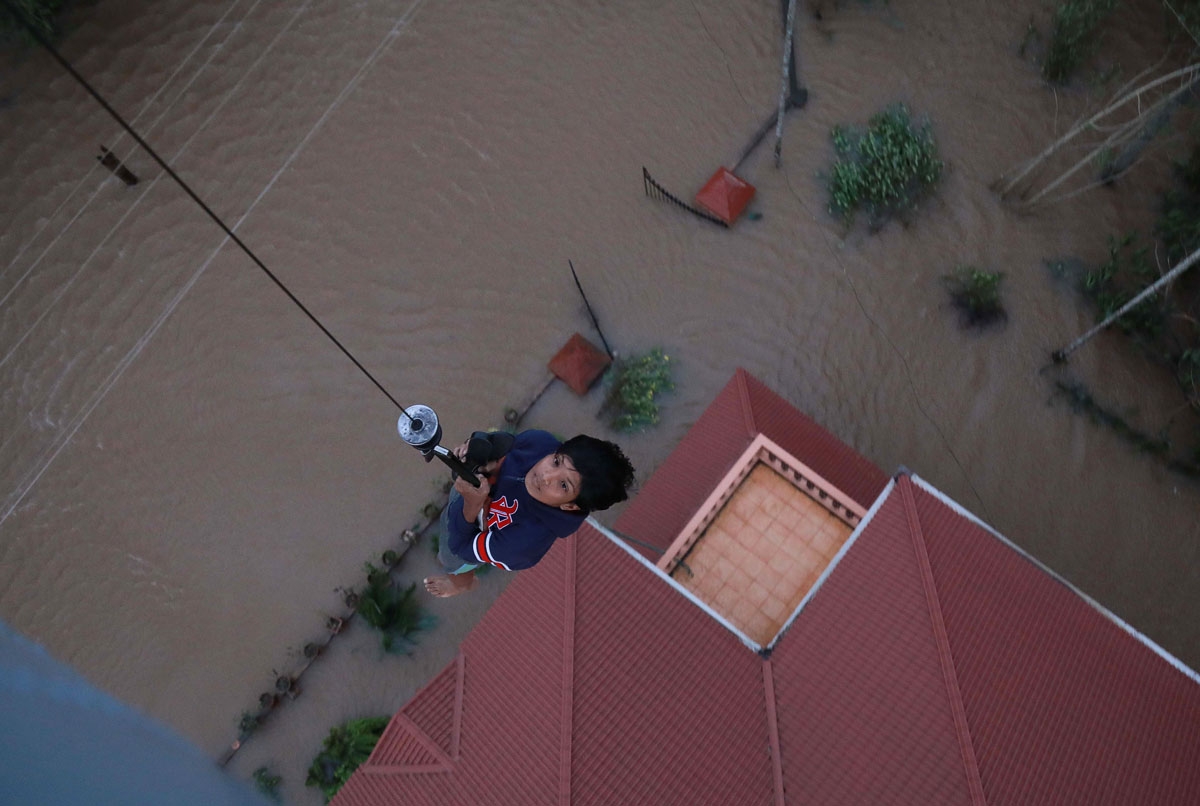
A person is airlifted near Kochi, Kerala, August 18, 2018.
(AFP)
copy https://www.afp.com/en/news
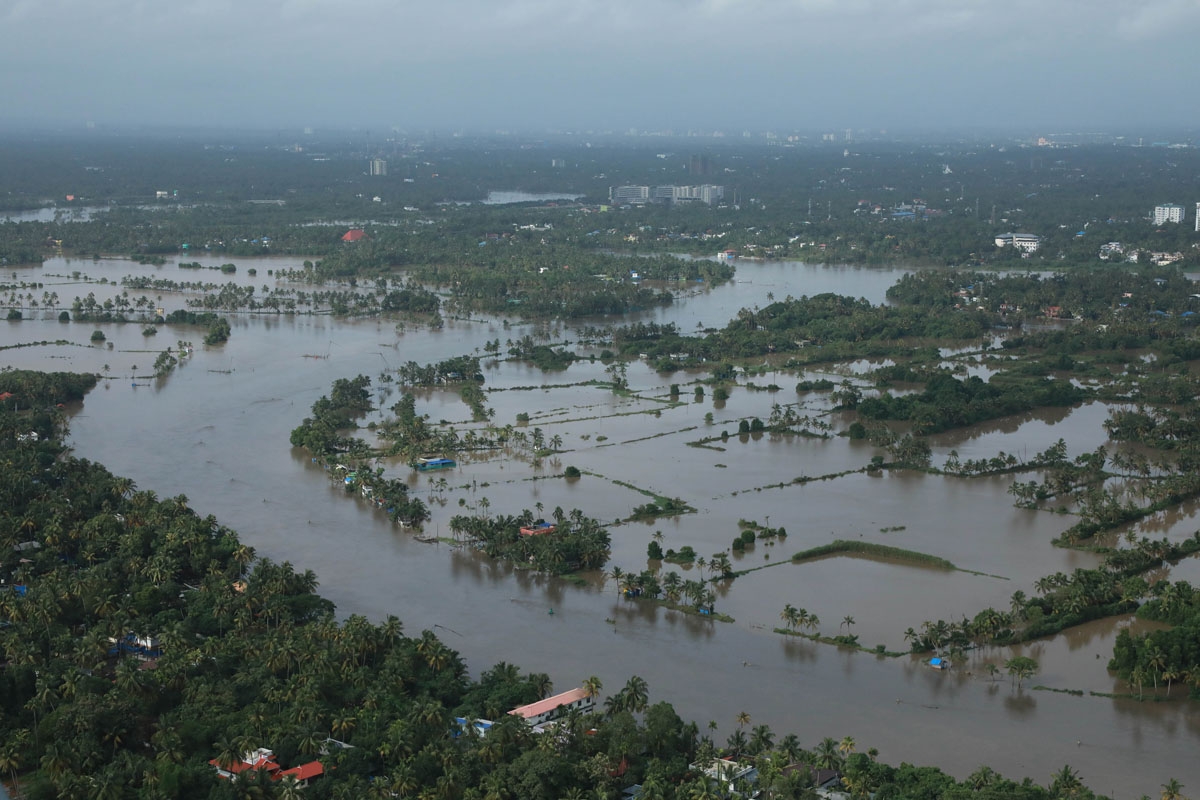



Nenhum comentário:
Postar um comentário